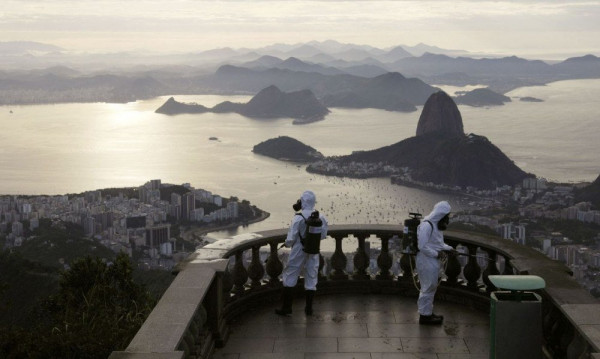According to a survey of the private sector, throughout the pendemic Brazil recorded losses of R $ 376,600 million (about US $ 73,000 million) and, despite the fact that the numbers of the last months show a trend towards reactivation, the industry continues losing money.
–
Throughout the pandemic, officially declared in March 2020, Brazil has shown itself as a country of lights and shadows, and one early opening of tourist activity has allowed it to partially mitigate the impact of being the second nation on the planet in positive cases and deaths from COVID-19.
Leveraged on domestic tourism, it began a slow but steady recovery until January 2021 inclusive.. At the end of the month of greatest demand of the summer, the second wave exploded, and between February and April everything fell apart. As of May, the activity was resumed; June consolidated the positive trend; Y starting in July, a gradual evolution is already projected, as long as a third wave does not explode by the Delta variant.
While Brazilian passengers are still banned in much of the world, the domestic shows signs of movement, but still very far from the volume necessary to heal the tremendous damage that the national tourism ecosystem has suffered in almost a year and a half. Is it possible to quantify that impact?
The National Confederation of Trade in Goods, Services and Tourism (CNC) carried out a study that yielded a difficult result to assimilate: losses in the Brazilian tourism sector reached R $ 376.6 billion (about US $ 73 billion).
But not because a reactivation is in sight today does that mean that money has stopped being lost today. Despite state aid and soft loans, lThe business union states that in May 2021 the losses were R $ 21,400 million (about US $ 4,140 million).
In any case, the economic reference of the CNC, Fabio Bentes, considered that these losses “have been reduced in recent months and will continue the same trend as the vaccination process advances and barriers to the circulation of tourists are relaxed”. “For the next few months the trend is for services, including tourism, to gain dynamism,” he added.
 –
–
As you can imagine, the main impact was verified in its two large hubs, São Paulo and Rio de Janeiro, which together accounted for 52.6% of this deficit (about R $ 200,000 million, about US $ 38,700 million, between March 2020 and May 2021.
Also, this had “A significantly negative impact” on the formal labor market related to tourism and, in fact, they maintain that it is “one of the few economic segments that still has not created employment since the emergence of SARS-CoV-2.”
How much will the activity grow this year, taking into account these reactivation forecasts? The optimism of the CNC is so great that they project that the year will end with + 17.8% in income from tourism, which would imply registering the highest growth rates of the last 11 years from now on.
Finally, in general economic terms, the Central Bank’s forecasts indicate that Brazilian GDP will register a 5.2% rise in 2021, which would make it possible to offset the 4.1% drop observed in 2020. However, analysts and international organizations affirm that growth would not be greater than 0.8 percentage points.
– .

